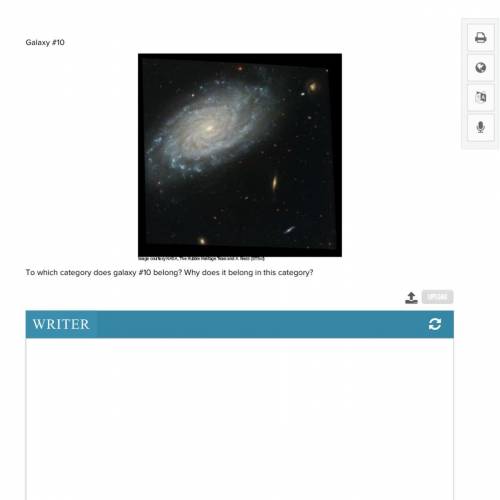To which category does galaxy #1 belong? Why does it belong in this category?
To which c...

Physics, 29.05.2020 11:57, JordynElizabeth11306
To which category does galaxy #1 belong? Why does it belong in this category?
To which category does galaxy #2 belong? Why does it belong in this category?
To which category does galaxy #3 belong? Why does it belong in this category?
To which category does galaxy #4 belong? Why does it belong in this category?
To which category does galaxy #5 belong? Why does it belong in this category?
To which category does galaxy #6 belong? Why does it belong in this category
To which category does galaxy #7 belong? Why does it belong in this category?
To which category does galaxy #8 belong? Why does it belong in this category?
To which category does galaxy #9 belong? Why does it belong in this category?
To which category does galaxy #10 belong? Why does it belong in this category?


Answers: 1
Other questions on the subject: Physics

Physics, 21.06.2019 22:00, Angelo1660
Air is held within a frictionless piston-cylinder container, which is oriented vertically. the mass of the piston is 0.45 kg and the cross-sectional area is 0.0030 m2. initially (state 1) the pressure of the gas is sufficient to support the weight of the piston as well as the force exerted by the atmospheric pressure ( 101.32 kpa). the volume occupied by the air within the cylinder in state 1 is 1.00 liter. one end of a spring (with spring constant k = 1000 n/m) is attached to the top of the piston, while the other end of the spring is attached to a stage that can move vertically. initially the spring is undeflected and therefore exerts no force. then the stage is then moved quasistatically downward a distance of 10.0 cm, at which point the system reaches state 2. the piston-cylinder is not insulated; rather it remains in diathermal contact with the surroundings, which are at a constant temperature of 300 k. what is the change of pressure within the container?
Answers: 3

Physics, 22.06.2019 07:00, Angelanova69134
Photoelectrons with a maximum speed of 6.50 x 107 m/s are ejected from a surface in the presence of light with a frequency of 6.75 x 1014hz. if the mass of an electron is 9.10 x 10-31 kg, calculate in joules the maximum kinetic energy of a single electron. 3.84 x 10-15 j 1.92 x 10-15 j 5.92 x 10-23 j 3.07 x 10-16 j
Answers: 1

Physics, 22.06.2019 13:40, sbudlove2838
What is the thinnest soap film (excluding the case of zero thickness) that appears black when illuminated with light with a wavelength of 480 ? the index of refraction of the film is 1.34, and there is air on both sides of the film. express your answer in nanometers. hint 1. how to approach th
Answers: 1
Do you know the correct answer?
Questions in other subjects:

Mathematics, 09.11.2019 06:31

Law, 09.11.2019 06:31


Mathematics, 09.11.2019 06:31



Mathematics, 09.11.2019 06:31

Social Studies, 09.11.2019 06:31

Health, 09.11.2019 06:31






